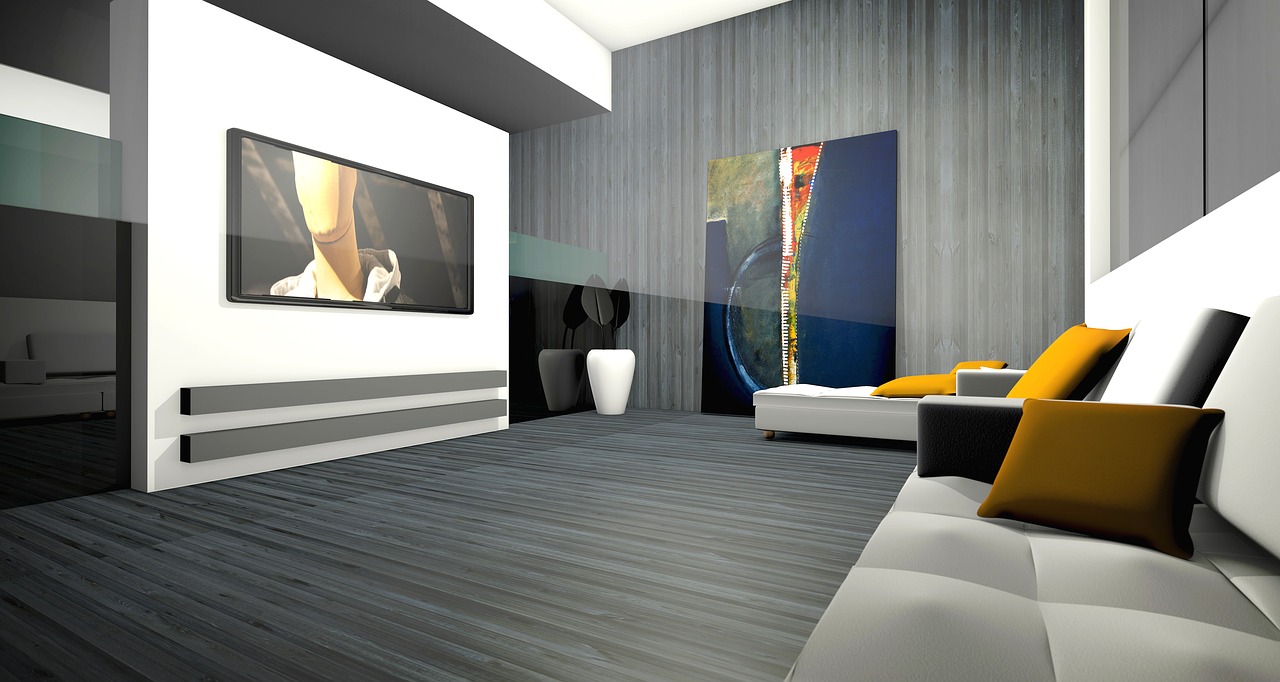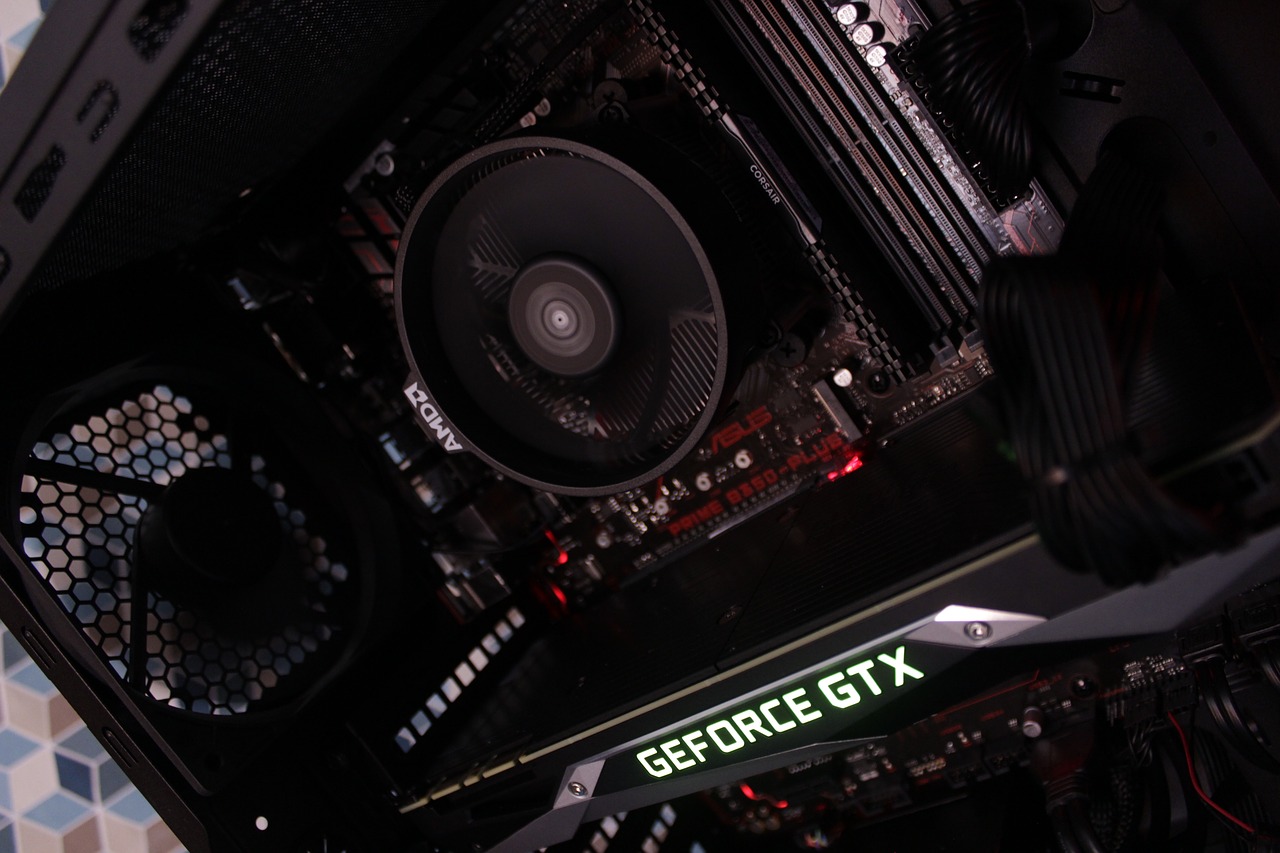3D rendering can be performed with either the CPU or GPU. However, GPU render engines like RedShift, Octane, and V-RAY RT have become more popular than CPU render engines. The GPU isn’t really used for the modeling per se, instead it’s used to render the model in real-time while you work. The CPU is then responsible for the actual modeling operation and calculations.
While it’s easy to simply buy the best graphics card that’s available, not many beginners have the budget, or even need a GPU of this caliber. Aside from reading through this guide, it is also our sincere advice that you also learn the advantages of 3D rendering so that you will be even more inspired to go for it today.
Model Names of Popular GPUs
When researching GPUs, you’ll encounter a variety of brands that offer their product with the same model names.
For instance, the GeForce GTX 1080 can be manufactured by brands like Asus, MSI, Gigabyte, and EVGA. The GPU model indicates that it was produced by Nvidia and the brand was responsible for packing the chip.
Nvidia is widely regarded as one of the leading companies in the production of graphics chipsets. Smaller companies opt to not to compete with them. Instead they use the same Nvidia model and have them packed under their brand name with different form factors.
Meaning, while the form factor (overall size and cooling mechanism) may look different, they utilize the same chipset for graphics processing.

GPUs for 3D Rendering
Nvidia Quadro P2000
The Quadro series by Nvidia was manufactured with 3D modeling and rendering in mind. Like all the GPUs from Quadro line, it’s based on Pascal GPU architecture. It features 1024 CUDA Cores, 5 GB of GDDR5 memory, and the ability to support 4x5k (5120 x 2880 @ 60 Hz) displays. The card uses a single slot via the PCI-E interface.
The Quadro P2000 is backed by a 3-year warranty and costs roughly $400-$450.
Specifications from Nvidia’s website:
- GPU Memory: 5 GB GDDR5
- Memory Interface: 160-bit
- Memory Bandwidth: Up to 140 GB/s
- NVIDIA CUDA® Cores: 1024
- System Interface: PCI Express 3.0 x16
- Max Power Consumption: 75 W
- Thermal Solution: Active
- Form Factor: 4.4” H x 7.9” L, Single Slot
- Display Connectors: 4x DP 1.4
- Max Simultaneous Displays: 4 direct, 4 DP 1.4 Multi-Stream
- Display Resolution: 4x 4096×2160 @ 120Hz 4x 5120×2880 @ 60Hz
- Graphics APIs: Shader Model 5.1, OpenGL 4.54 , DirectX 12.05 , Vulkan 1.04
- Compute APIs: CUDA, DirectCompute, OpenCL
AMD Radeon Pro WX 7100
The Radeon Pro WX7100 is more geared towards content creation, especially those that cater to game engines and virtual reality (VR). As you might already be aware, workstation cards can get expensive, fast. However, the WX7100 looks to solve this problem and currently runs between $500 – $550 at the time of writing this.
The introduction of polaris based GPUs is changing the game. As a result, AMD changed the look of their Radeon cards. Although the color change is visually appealing, it’s also functional as they used YInMn blue which is heat reflective and resistant to fading and corrosion.
The WX7100 uses AMD’s 4th generation polaris architecture and boasts 8 GB of memory. AMD has also ensured that the Radeon has ISV or independent software vendor certification and support. This is crucial for applications that require stability, like rendering.
Specifications from AMD’s website:GPU Architecture: Polaris
- Stream Processors: 2304
- Memory: 8 GB GDDR5
- Memory Bandwidth: 224 GB/s
- Form Factor/Bus Type: PCIe® Add-in Card 3.0 x16
- Cooling: Active
- DisplayPort™: 4x DisplayPort 1.4
Nvidia Geforce GTX 1080 Ti
At the time of its release (2017), the GTX 1080 Ti was one of the most anticipated graphic cards. To this day it still competes with Nvidia’s latest iteration, the RTX 2080.
The 1080 Ti features 3584 CUDA cores, 224 texture units and 88 ROPs. It has an impressive 11 GB of GDDR5X VRAM making for a quick pascal architecture based card. Looking closer we can see it has a base of 1480Mhz and can be boosted to 1582MHz.
Needless to say, even 3 years later, the GTX 1080 Ti is still one of the most impressive graphics cards of all time. Even since the RTX 2080 came out, the 1080 Ti has remained highly sought after and is at a similar price-point of $800.

Specifications from Nvidia’s Website:
- CUDA Cores: 3,584
- Texture Units: 224
- ROP Units: 88
- Base Clock: 1,480MHz
- Boost Clock: 1,582MHz
- Video Memory: 11GB GDDR5X
- Memory Clock: 5,505MHz
- Memory Data Rate: 11Gbps
- Form Factor: Dual-slot
- Power Connectors: 1 x 6-pin, 1 x 8-pin
- Ports: 3 x DisplayPort 1.4, 1 x HDMI 2.0
Nvidia Quadro P4000
The Quadro P4000 is the middle-ground card of the Quadro line. We reviewed the P2000 above, which costs $400-$450. The Quadro P4000 costs roughly $800-$900. However at the highest end of the Quadro line is the P6000 at roughly $3000.
Needless to say, the P4000 is a cost effective solution. It’s designed specifically for demanding professional applications like rendering. It comes equip with 1792 CUDA cores and 8 GB of GDDR5 memory.
The P4000 uses a single PCI-e slot and features four DP 1.4 displayports. This allows it to support up to 4x5k displays (5120 x 2880 @ 60Hz).
Specifications from Nvidia’s Website:
- GPU Memory: 8GB GDDR5
- Memory Interface: 256-bit
- Memory Bandwidth: Up to 243 GB/s
- NVIDIA CUDA Cores: 1792
- System Interface: PCI Express 3.0 x16
- Max Power Consumption: 105 W
- Thermal Solution: Active
- Form Factor: 4.4” H x 9.5” L, Single Slot, Full Height
- Display Connectors: 4x DP 1.4
- Max Simultaneous Displays: 4 direct, 4 DP 1.4 Multi-Stream
- Display Resolution: 4x 4096×2160 @ 120Hz 4x 5120×2880 @ 60Hz Graphics APIs Shader Model 5.1, OpenGL 4.54 , DirectX 12.05 , Vulkan 1.04
- Compute APIs: CUDA, DirectCompute, OpenCL
Final Thoughts
If you’re looking for a GPU for rendering purposes, any of the above options will get the job done. These specific cards not only stand out in terms of their performance and spec sheet, they’re also cost effective solutions. Again, if you’re goal is to get the best possible performance, expect to pay an upwards of $3000 for a card like the Nvidia Quardro P6000.





